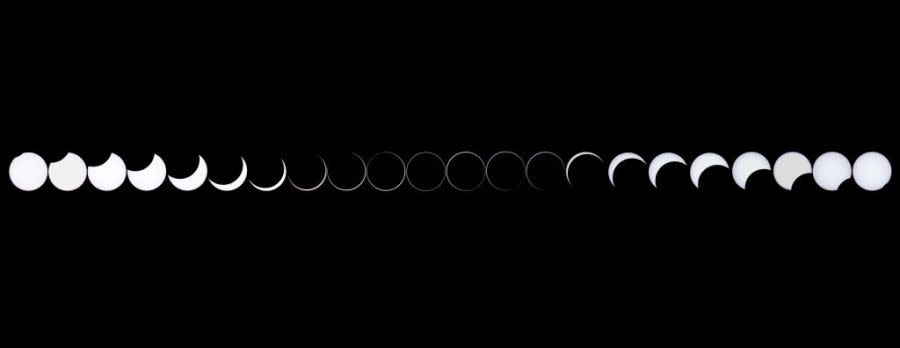Here’s how the solar eclipse could affect your home’s power
LAS VEGAS (KLAS) — With all these solar panels and no more coal-fired power plants, is Nevada headed for disaster when the solar eclipse arrives Saturday morning?
Nope.
That’s the short answer from NV Energy, because they’ve been working ahead to make sure there’s no problem when the solar power supply goes on pause while the moon parks in front of the sun. The “ring of fire” eclipse, also known as an annular eclipse, won’t even be noticeable if you’re sitting at home with blinds closed and the lights burning.
Vernon Taylor, director of trading operations in the Resource Optimization Department for NV Energy, told 8 News Now on Wednesday that the company is prepared.

“At this point in time, we don’t see any issues or any major impacts to the system. We don’t see any disruptions to customers’ flow of power to their houses. We feel that we’re very well prepared for the eclipse and we don’t really see any issues.”
It’s been just over six years since the last major eclipse in Nevada — a total eclipse on Aug. 21, 2017. In that time, a lot of homeowners have installed rooftop solar. How will they be affected by this eclipse?
“For the homeowner who has solar — rooftop solar — their energy needs are still going to be met,” Taylor said. “There is not going to be a disruption of energy because they’re still our customers and we’re still responsible for providing that additional energy. I mean it’s just like at night when their solar panels are not being fed by the sun, their power doesn’t go out.”
And while the effect on solar production will be similar to what happens when clouds block the sun, the eclipse will cause a “substantial reduction in solar production,” according to Taylor. And it will hit the entire region.
Southern Nevada will see an 80-85% obscuration of the sun, and it will be 100% in a band from northwest Nevada to east-central Nevada. NV Energy says Battle Mountain along Interstate 80 in Northern Nevada will see the maximum darkness from the eclipse.

Taylor said that meant more collaboration across the state as NV Energy analyzed power needs and power supplies during the course of the event.
The company has site-specific solar output forecasts, and uses models to predict load and available resources.
NV Energy has even posted a page on its website addressing questions about the eclipse.
“We will use the normal strategies to account for the lost solar production, including discharging batteries, using more of our Hoover allocation and starting gas-fired peakers, if needed,” according to the website.
For the latest news, weather, sports, and streaming video, head to KLAS.

